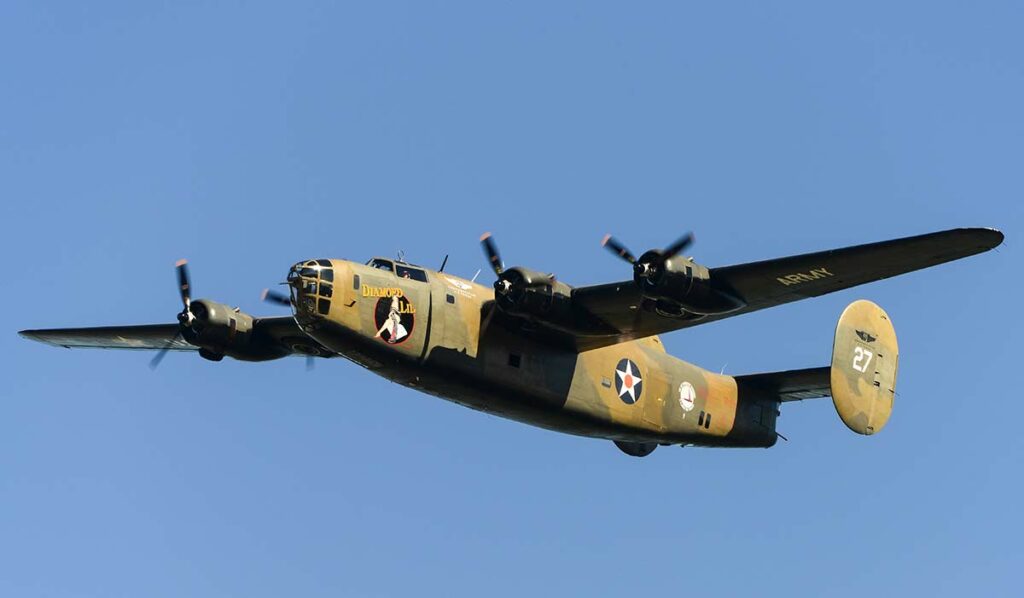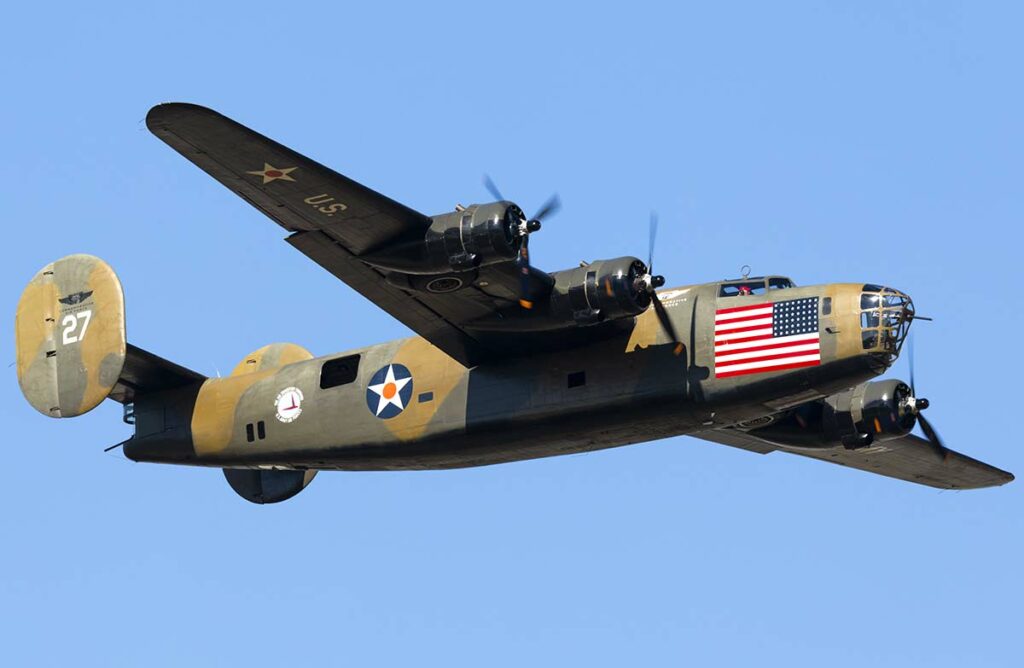The Consolidated B-24 Liberator, a prominent WWII American heavy bomber, noted for its long-range, high altitude, and substantial payload capacity.
The Consolidated B-24 Liberator was one of the most produced and versatile heavy bombers of World War II. Designed for long-range and high-altitude missions, it played a crucial role in various Allied air operations. This article aims to cover the development, design, operational capabilities, and combat history of the B-24 Liberator.

History of the Development of the Consolidated B-24 Liberator
In the late 1930s, as tensions escalated globally, the United States sought to enhance its aerial warfare capabilities. The development of the B-24 Liberator was initiated by Consolidated Aircraft Corporation, led by chief designer Isaac M. Laddon. The primary objective was to create a heavy bomber that could outperform existing models in range, speed, and payload.
The B-24 project was launched in response to a request from the United States Army Air Corps for a bomber with longer range and higher operational ceiling than the B-17 Flying Fortress. The first B-24 took flight on December 29, 1939, showcasing its potential as a significant asset in long-range strategic bombing.
Its development was a critical element in the United States’ strategy to strengthen its air power and extend its global reach.
Design of the Consolidated B-24 Liberator
The B-24 Liberator’s design was distinguished by its high-aspect ratio Davis wing, which provided greater lift and efficiency than the conventional wing designs of the time. It was powered by four Pratt & Whitney R-1830 Twin Wasp radial engines, each providing significant horsepower.
The aircraft had a length of 20.6 meters and a wingspan of 33.5 meters. Its design included a tricycle landing gear, a distinct feature that differentiated it from other bombers of the era. The B-24 could carry a heavy bomb load, making it a formidable asset in strategic bombing missions.
However, its design also had drawbacks, such as a relatively cramped interior and less durable construction compared to the B-17. Its high-wing design made it more vulnerable to battle damage, particularly on the lower fuselage.
Performance of the Consolidated B-24 Liberator
In performance terms, the B-24 Liberator was notable. It could reach a maximum speed of about 487 km/h (302 mph) and had a service ceiling of around 8,500 meters (28,000 feet). Its range of approximately 3,700 kilometers (2,300 miles) was one of its key advantages, allowing it to conduct long-range bombing missions.
Compared to its contemporaries like the Boeing B-17 Flying Fortress, the B-24 had a greater range and payload capacity but was generally considered less robust under combat conditions. Its operational flexibility, however, made it valuable in various mission profiles.

Military Use and Combat of the Consolidated B-24 Liberator
The B-24 Liberator was heavily armed with machine guns and could carry a substantial bomb load. It saw extensive use in various theaters of World War II, including in Europe, the Pacific, and North Africa. The B-24 was pivotal in major operations such as the Ploesti oil fields raid and anti-submarine campaigns in the Atlantic.
The Liberator faced competition from German and Japanese fighter aircraft but often succeeded due to its long-range and high-altitude capabilities. It was used by several Allied nations and continued to serve in various roles post-World War II, though it was eventually replaced by more advanced bombers.
The Consolidated B-24 Liberator remains a significant aircraft in the annals of World War II aviation. Its development, innovative design, and operational versatility made it a key component of Allied strategic bombing campaigns. The B-24’s legacy is not only in its widespread use and contribution to the Allied victory but also as a symbol of American industrial capacity and technological innovation during a critical period of global conflict.
Back to the Bombers section.